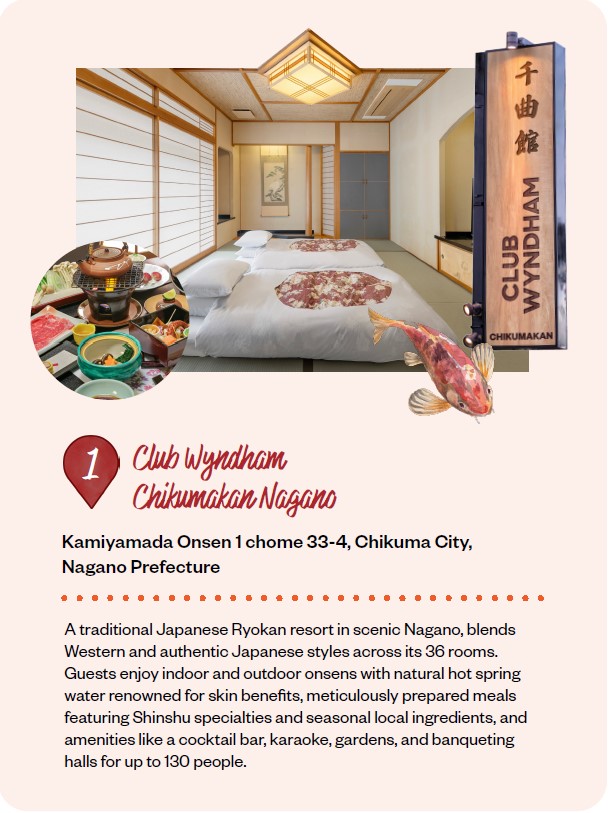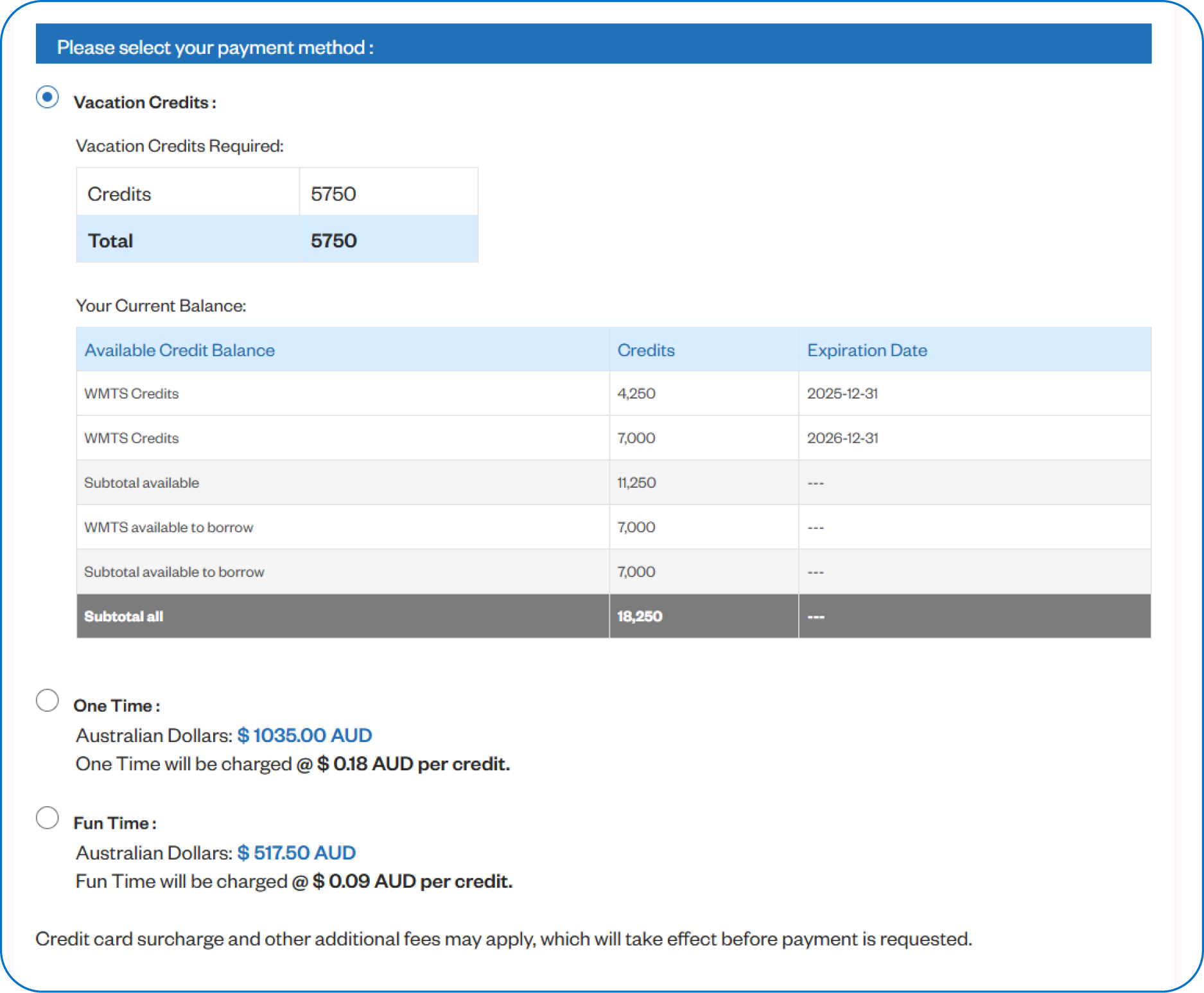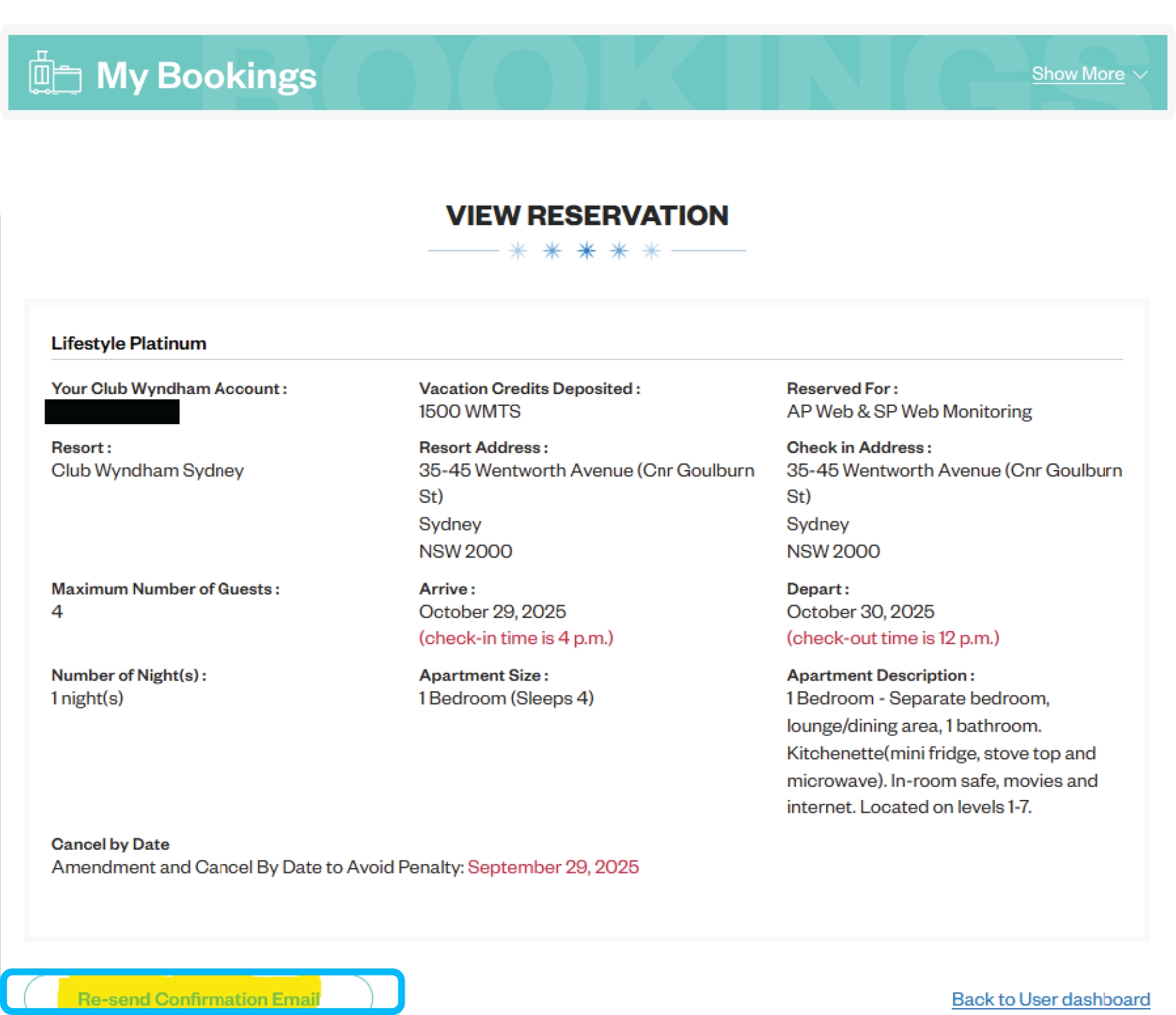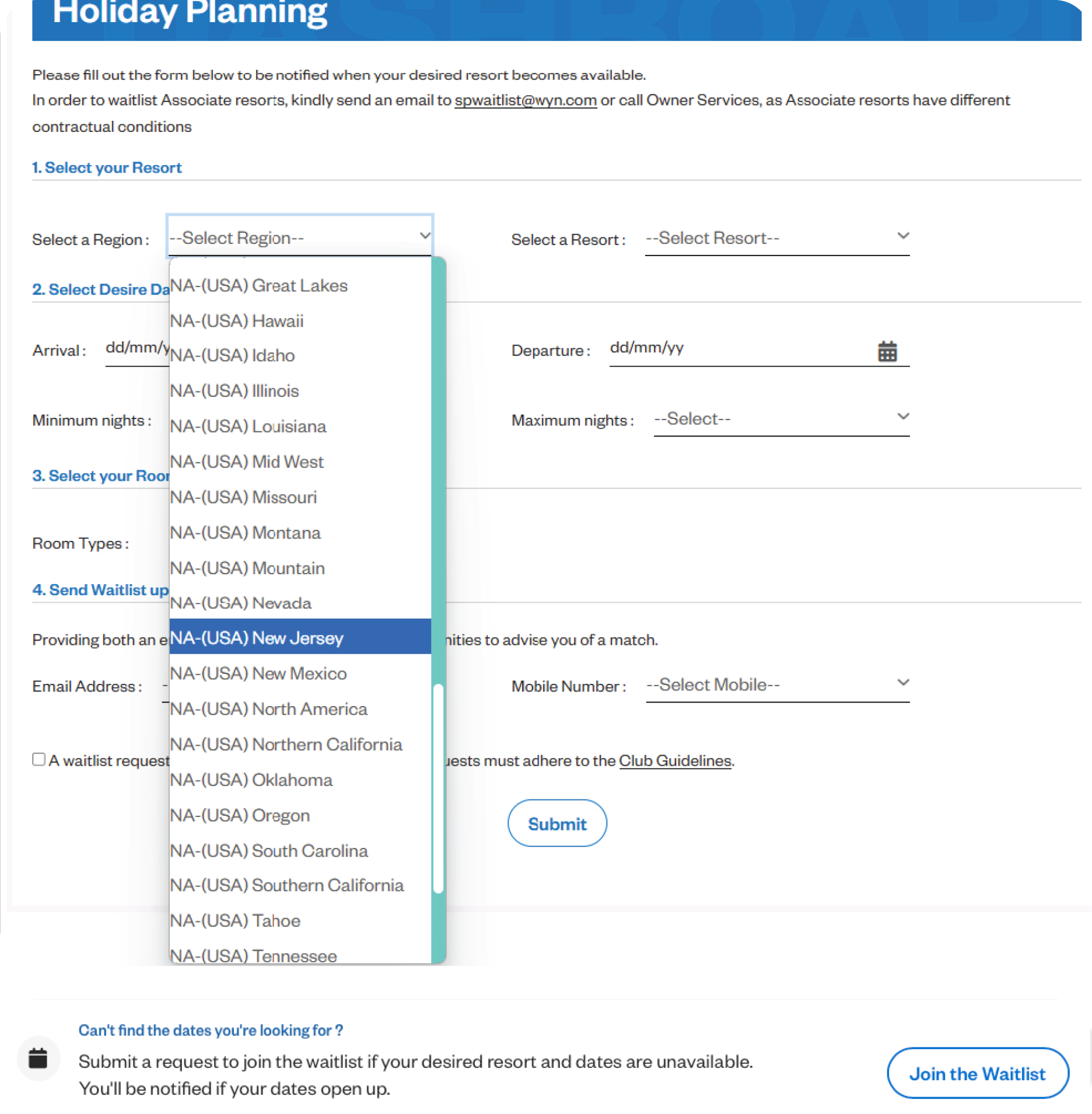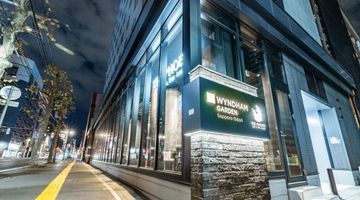Galapagos of the Southern Ocean Expedition Cruise
From AU$18,795* per person, twin share
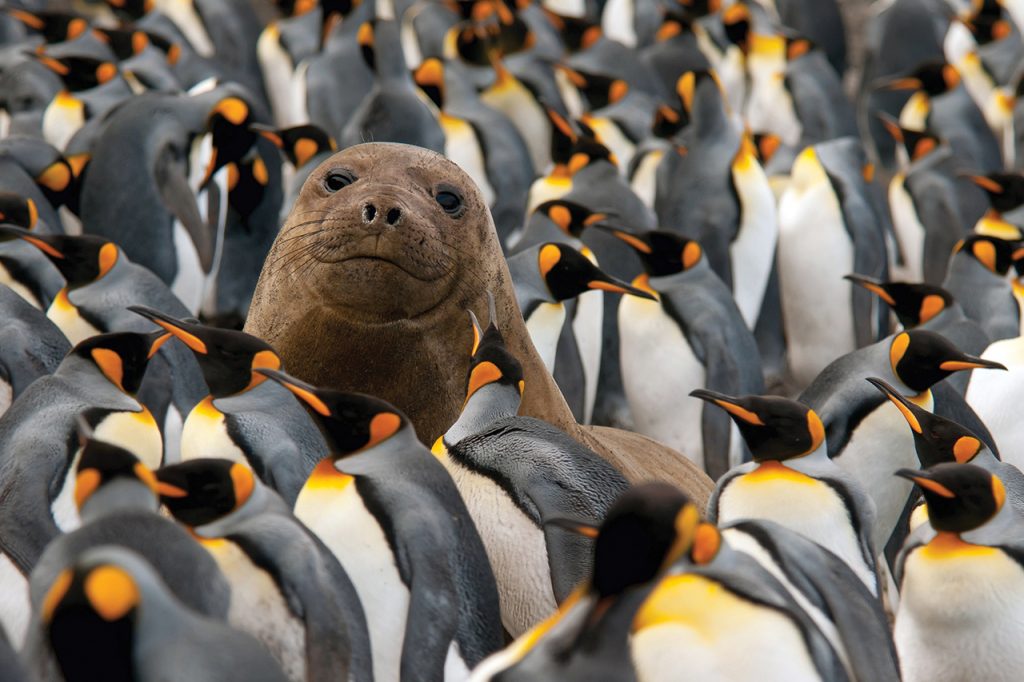
12 Days – Starts and Ends in Queenstown
Destinations: Auckland Islands, Campbell Island, Macquarie Island, The Snares
This is without doubt one of the most inspirational and informative journeys or expeditions into the Southern Ocean ecosystem that one can make anywhere in the world. Explore New Zealand’s remote Subantarctic Islands on a 12-day voyage aboard Heritage Adventurer, discovering rare wildlife, dramatic landscapes, and UNESCO-listed biodiversity with expert guides.
Highlights
- Visit wildlife-rich islands like the Snares, Campbell, and Macquarie.
- See vast colonies of penguins, albatrosses, and seals up close.
- Enjoy guided hikes and Zodiac landings in pristine wilderness.
- Learn from expert naturalists and conservation rangers onboard.
Travelflex payment options available to eligible Lifestyle Gold, Platinum and 100 Club Owners.
Package Pricing
Payment options: The use of part payment using your vacation credits is available with the Travel Flex benefit, currently available to Owners who are Lifestyle Gold and above.
| Price Per Person, Twin Share | |
| Departures | From Price |
| 31 DEC 2025 – 11 JAN 2026 | AU$17,250* |
| 22 NOV – 3 DEC 2026 | AU$18,795* |
| 17 DEC – 28 DeC 2026 | AU$18,795* |
| . | |
| Bookings subject to availability. Pricing is correct at time of publishing but is subject to change without notice. Based on a Superior Deck 4 Cabin – for upgrades and single options please contact us. | |
Itinerary & Inclusions
- One Night Pre-Cruise Accommodation in Queenstown with Dinner & Breakfast
- Pre-Cruise Transfers from Queenstown to Bluff
- 10 Nights Onboard The Heritage Adventurer –
Stay in a Spacious Superior Deck 4 Cabin (Cabin upgrade and single option
available, enquire for prices)
All Onboard Meals, House Beer, Wine & Soft Drinks Included
All Expedition Shore Excursions Included
Personalised expedition experience, capped at just 140 Guests
Programme of Lectures by Noted Naturalists
Onboard library, gym, pool, hot tub, sauna, steam room, observation lounge, café, bar and retail stores - Post Cruise Transfers to Invercargill or Queenstown
Deck 4 Superior Cabin
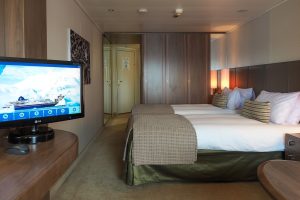
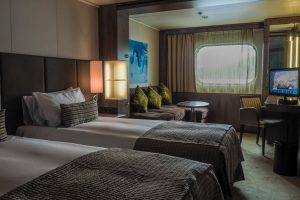
Itinerary
Day 1 Queenstown
Guests should make their way to the designated hotel where we will spend the first night of the expedition. This evening there will be an informal get-together at the hotel for dinner; an excellent opportunity to meet fellow adventurers on your voyage and some of our expedition team.
Day 2 Port of Bluff
Today we enjoy breakfast in the hotel restaurant and have the morning free to explore Queenstown before returning to the hotel for lunch and departing for the Port of Bluff to embark your ship. You will have time to settle into your cabin and familarise yourself with the ship; we will also take the opportunity to conduct a number of safety briefings. You are invited to join the expedition team in the Observation Lounge and up on the Observation Deck as we set our course to The Snares and our adventure begins.
Day 3 The Snares – North East Island
The closest Subantarctic Islands to New Zealand, they were appropriately called The Snares as they were once considered a hazard for sailing ships. Comprising of two main islands and a group of five islands called the Western Chain; they are uninhabited and enjoy the highest protection as Nature Reserves. It is claimed by some that these islands are home to more nesting seabirds than all of the British Isles together. We plan to arrive in the morning, and as landings are not permitted, we will Zodiac cruise along the sheltered eastern side of the main island if the weather and sea conditions are suitable. In the sheltered bays, we should see the endemic Snares Crested Penguin, Snares Island Tomtit and Fernbirds. There are hundreds of thousands of Sooty Shearwaters nesting on The Snares; the actual number is much debated. Buller’s Albatross breed here from early January onwards. There will be opportunities to view the forests of large tree daisy Olearia lyallii which forms a canopy over much of the island group
Day 4 Auckland Islands – Enderby Island
The Auckland Islands group was formed by two volcanoes which erupted some 10-25 million years ago. They have subsequently been eroded and dissected by glaciation creating the archipelago as we know it today. Enderby Island is one of the most beautiful islands in this group and is named after the same distinguished shipping family as one of our previous vessels. This northern most island in the archipelago is an outstanding wildlife and birding location and is relatively easy to land on and walk around. The island was cleared of all introduced animals (pests) in 1994 and both birds and the vegetation, especially the herbaceous plants, are recovering both in numbers and diversity. Our plan is to land at Sandy Bay, one of three breeding areas in the Auckland Islands for the Hooker’s or New Zealand Sea Lion, a rare member of the seal family. Beachmaster bulls gather on the beach, defending their harems from younger (ambitious) males to mate with the cows shortly after they have given birth to a single pup. Hooker’s or New Zealand Sea Lion numbers are in a slow decline, for reasons which are not obvious but most probably connected with a nearby squid fishery. During our day ashore there will be several options, some longer walks, some shorter walks and time to spend enjoying the wildlife. The walking is relatively easy. A boardwalk traverses the island to the dramatic western cliffs; from there we follow the coast and circumnavigate the island. Birds that we are likely to encounter include the following species: Southern Royal Albatross, Northern Giant Petrel, Auckland Island Shag, Auckland Island Flightless Teal, Auckland Island Banded Dotterel, Auckland Island Tomtit, Bellbird, Pipit, Red-crowned Parakeet, Yellow-eyed Penguin and Light-mantled Sooty Albatross. There is also a very good chance of seeing the Subantarctic Snipe. Other more common species we will see include the Goldfinch, Song Thrush, Blackbird, European Starling, Red-billed Gull and Redpoll. On Derry Castle Reef we will look for migratory waders which could include Bar-tailed Godwit, Turnstone and possibly vagrants.
Day 5 Auckland Islands – Carnley Harbour
In the south of the archipelago there is a very large sheltered harbour rich in human history including shipwrecks, treasure hunters, Coastwatchers and, of course, scientific parties. We plan to arrive mid-morning entering the harbour through the eastern entrance which is guarded on both sides by dramatic cliffs and rugged, tussock-covered hills. Our activities here today are weather dependent. We have a number of options. If the weather is fine there will be an opportunity for the more energetic expeditioners to climb to the South West Cape and visit the Shy Mollymawk colony. This climb provides magnificent views in all directions, especially over the western entrance to Carnley Harbour, Adams Island and Western Harbour. For those not making the climb there will be an opportunity to Zodiac cruise along the coast of Adams Island, Western Harbour and Victoria Passage. Other options include the Tagua Bay Coastwatcher’s hut and lookout which was occupied during the Second World War. We could visit Epigwatt and the remains of the ‘Grafton’ which was wrecked here in 1864. All five men aboard survived and lived here for 18 months before sailing their modified dinghy to New Zealand to get help. Two of the survivors wrote books about their ordeal, their first-hand accounts tell us a lot about their time here. Later this afternoon we depart for Macquarie Island.
Day 6 At Sea
As we make our way through an area known as the Furious Fifties in the tumultuous Southern Ocean, we will learn more about the flora and fauna as we prepare for our arrival at Macquarie Island. En route there are great birding opportunities which may include the Wandering Albatross, Royal Albatross, Black-browed Albatross, Light-mantled Sooty Albatross, Salvin’s Albatross, Grey-headed Albatross, Northern and Southern Giant Petrel, Sooty Shearwater and Little Shearwater. We will endeavour to spot the Fairy Prion, Fulmar Prion and Antarctic Prion – never an easy task – but we should get some great views. Other species to be on the lookout for include the Soft-plumaged Petrel, Mottled Petrel, White-headed Petrel, Grey-faced Petrel, White-chinned Petrel, Grey-backed Storm-Petrel, Wilson’s Storm-Petrel and the Black-bellied Storm-Petrel.
Day 7 & 8 Macquarie Island
Described by one Australian explorer as “One of the wonder spots of the world” this is the only place in the world where the beautiful Royal Penguin breeds. Three other species of penguins, the King, Gentoo and Rockhopper also breed here. You will never forget your first experience of a noisy ‘penguin city’, where the dapper inhabitants show no fear of their strange visitors and where you will be immersed in a tumult of chattering, feeding chicks; territorial disputes; petty pilfering and courtship displays. This all happens amongst the hundreds of Southern Elephant Seals lolling on the beaches and dunes. On arrival we hope to meet with scientists and Park Rangers based here who will accompany us on all our landings.
Day 9 At Sea
There will be briefings and lectures on Campbell Island in preparation for our visit there and opportunities for pelagic birding and/or simply relaxing.
Day 10 Campbell Island – Perseverance Harbour
We have a full day to explore Campbell Island, New Zealand’s southernmost Subantarctic territory. Its history is as rich and varied as the other islands we visit. Discovered in 1810, it was soon occupied by sealers who introduced rats and cats. Farming followed from 1895 to 1934 when it was abandoned. Coastwatchers were stationed on the island during the war and at the end of the war the station was taken over by the New Zealand Metrological service. They maintained a manned weather/ research station there until 1995. In the early 1970s the removal of farm animals commenced and all were eventually removed by 1990. The vegetation recovered quickly and the cats died out naturally. In a very ambitious (and never before attempted on such a large scale) eradication programme the New Zealand Department of Conservation successfully removed the rats. With the island declared predator free, the way was clear to reintroduce the endangered Campbell Island Flightless Teal, which had been rediscovered on an offshore island in 1975. Snipe, which were formerly unknown from the island but were discovered on another offshore island, recolonised the islands themselves. The vegetation which the great English botanist Sir Joseph Hooker described in 1841 as having a “Flora display second to none outside the tropics” is flourishing and is nothing short of spectacular. We will offer a number of options which will enable you to explore the island including an extended walk to Northwest Bay. There will also be an easier walk to the Col Lyall Saddle. All of these options will allow you the opportunity and time to enjoy the Southern Royal Albatross which nest here in large numbers. We also visit areas of the island which contain outstanding examples of the megaherbs for which the island is renowned.
Day 11 At Sea
At sea en route to the Port of Bluff, take the opportunity to relax and reflect on an amazing experience. We will recap the highlights of our expedition and enjoy a farewell dinner tonight as we complete the last few miles of our journey.
Day 12 Invercargill/Queenstown
Early this morning we will arrive in the Port of Bluff. After a final breakfast we bid farewell to our fellow voyagers and take a complimentary coach transfer to either Invercargill or Queenstown Airports. In case of unexpected delays due to weather and/or port operations we ask you not to book any onward travel until after midday from Invercargill and after 3pm from Queenstown.
Important Information
- Bookings subject to availability.
- Prices are per person twin share, in Australian Dollars.
- Pricing correct as of 6 January 2026 and may fluctuate due to changes in availability, surcharges, fees or taxes.
- Standard Travel Club Terms and Conditions apply.
- This tour is offered and managed by Anzcro and their terms and conditions apply. Departure dates as stated.
- No airfares are included in this package but assistance with booking can be provided on request.
- Cancellation and change fees apply. Bookings are non-transferable.
- Travel insurance is not included in the package. Please ensure you have valid Travel Insurance, or request a quotation.
- The prices displayed on our website are based on information provided by our suppliers and are accurate at the time of publishing, but are subject to change without notice due to fluctuations in taxes, currency exchange rates, or availability. The prices quoted represent the best available at the time of publication. We do not assume responsibility for changes made by suppliers, as many departures are subject to capacity controls. Any updates to pricing will be provided at the time of your enquiry
TRAVELFLEX ^ Important guidelines
- These offers are provided by Travel and Leisure Australia Pty Ltd ACN 090 083 613 (Developer) via the Travel Flex benefit as part of Lifestyle by Wyndham membership and are subject to availability at the time of booking. Travel Flex is available to all Lifestyle Gold members and above.
- You can exchange up to the equivalent of your annual holding of Lifestyle Qualified Credits toward Travel Flex:
- For Gold members, this will be between 35,000 and 62,999 credits per year.
- For Platinum members, this will be between 63,000 and 99,999 credits per year.
- For 100 Club members, this will be from 100,000 credits per year with a maximum cap of 150,000 credits permitted per year.
- NOTE – only your annual holding of Lifestyle Qualified credits may be used; you cannot use saved or borrowed credits.
- Lifestyle Platinum and 100 Club members can make up to two transactions per promotional period (provided the total amount of exchanged credits does not exceed your annual holding of credits or the cap of 150,000 credits for 100 Club members).
- Your credits must have a minimum of 6 months / 180 days validity for use with Travel Flex
- You must provide a Housekeeping Token for the first 19,999 credits and for each additional 10,000 Lifestyle Qualified Credits exchanged for Travel Flex.
- If you do not have enough allocated tokens per above, a fee of AU$139 is payable per 10,000 credits (or part thereof) exchanged.
- If you prefer to use fewer credits and more cash, we can adjust the pricing accordingly.
- This is a benefit provided by the Developer, Travel and Leisure Australia, and can be extended, changed, or removed at any time.
If you prefer to use less credits and more cash, we can adjust the pricing accordingly

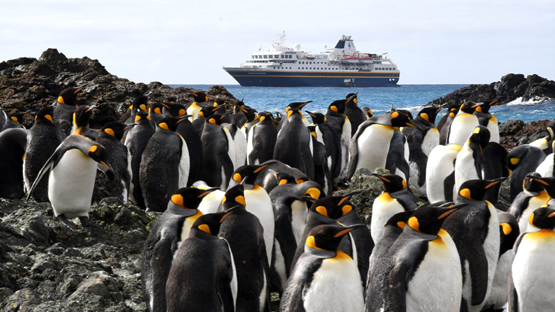
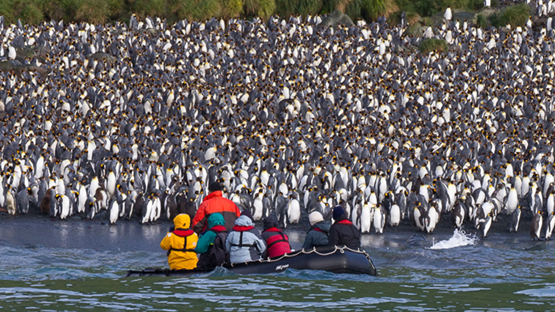
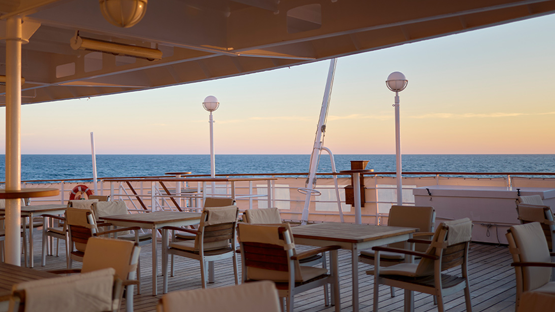
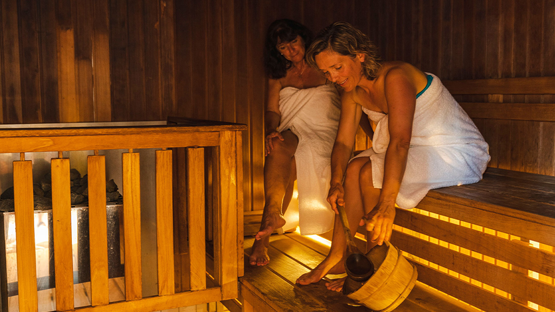
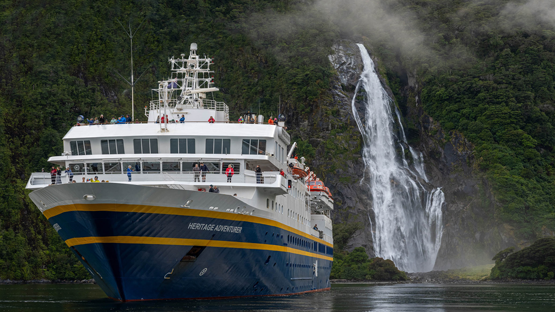
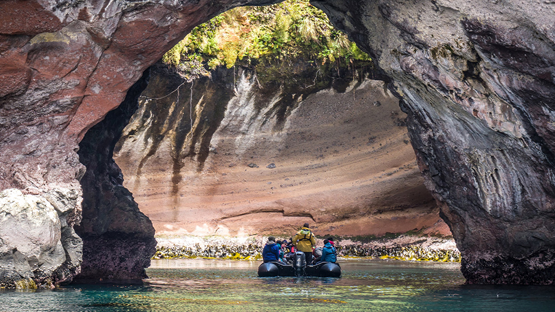
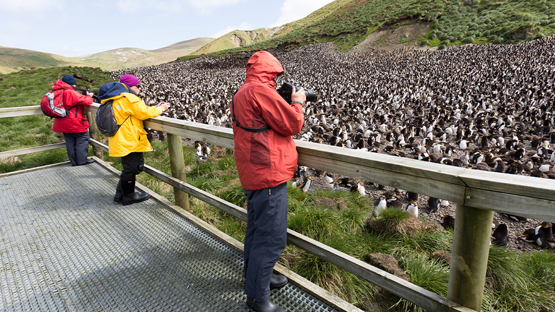
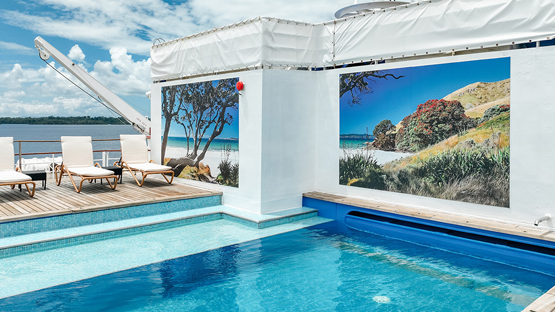



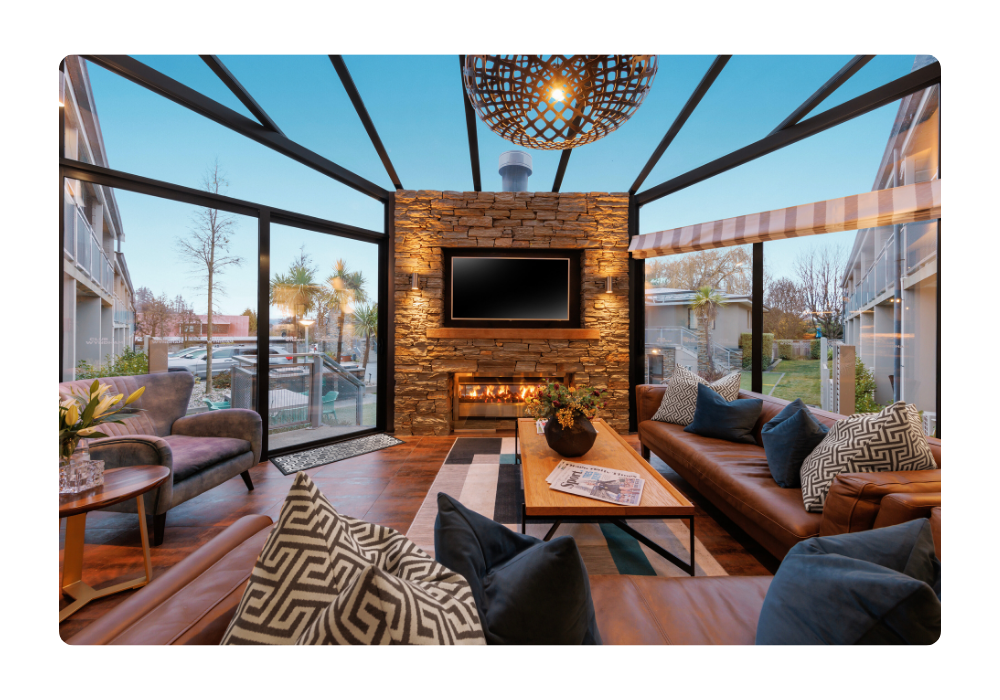
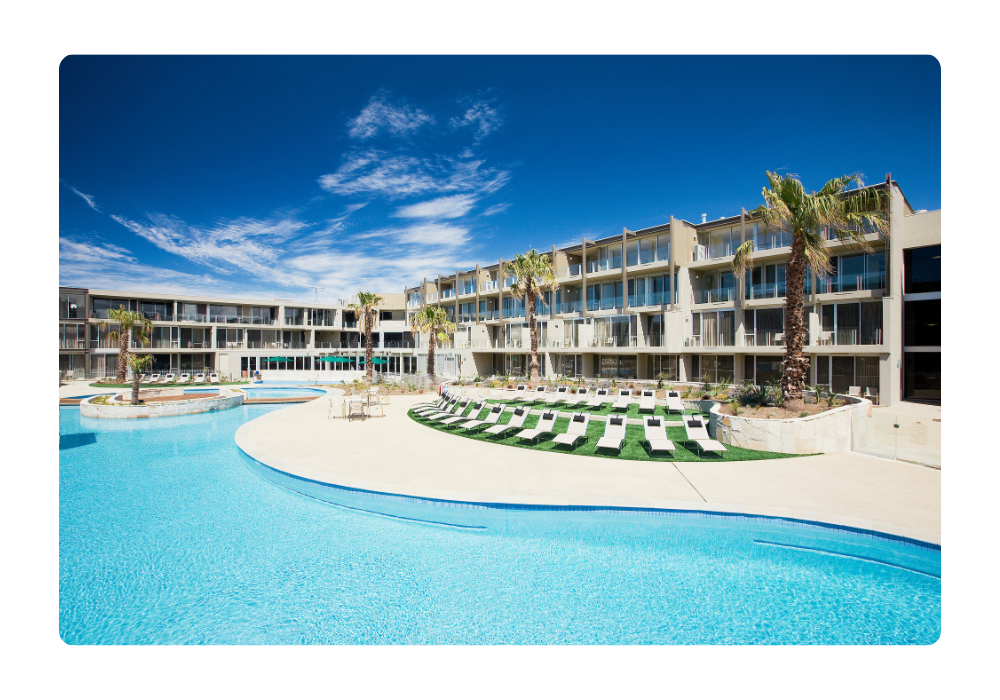 Club Wyndham Torquay
Club Wyndham Torquay
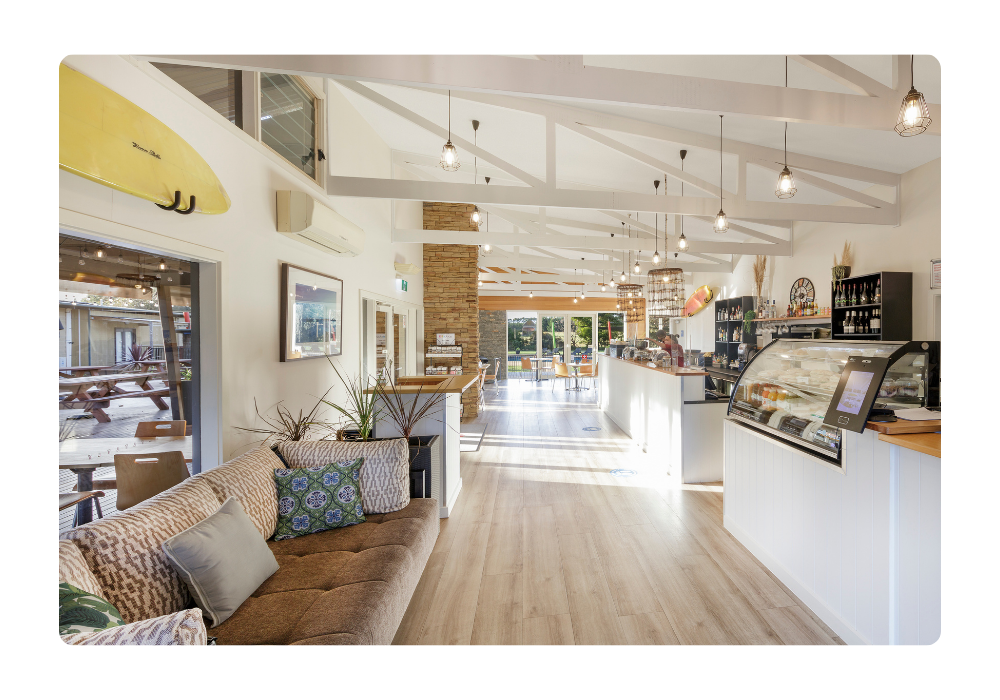 Club Wyndham Phillip Island
Club Wyndham Phillip Island Club Wyndham Mission Beach
Club Wyndham Mission Beach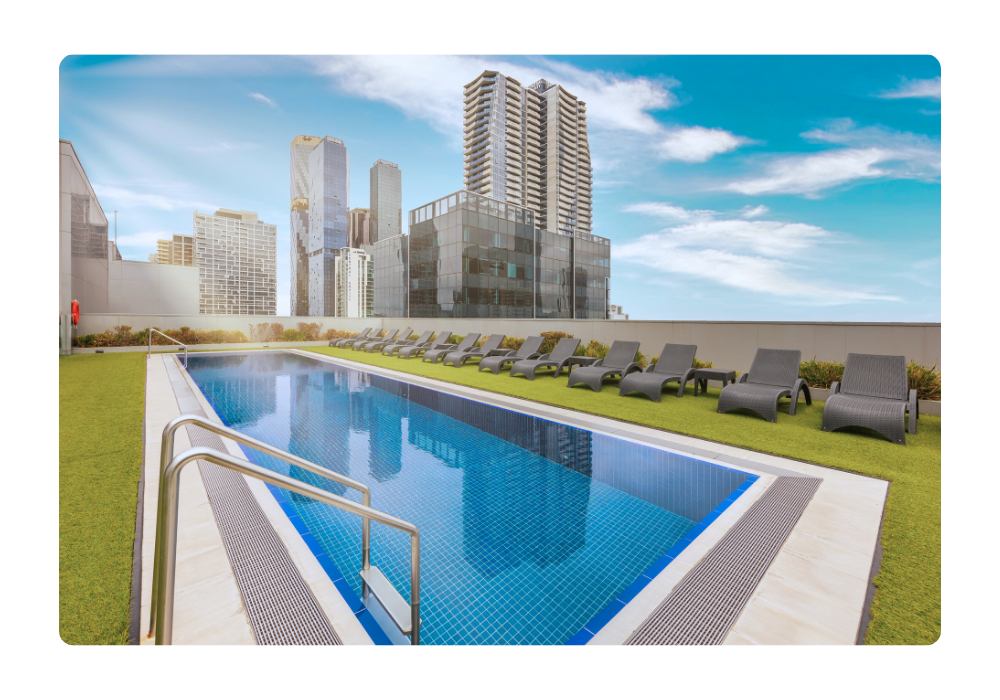 Club Wyndham Melbourne
Club Wyndham Melbourne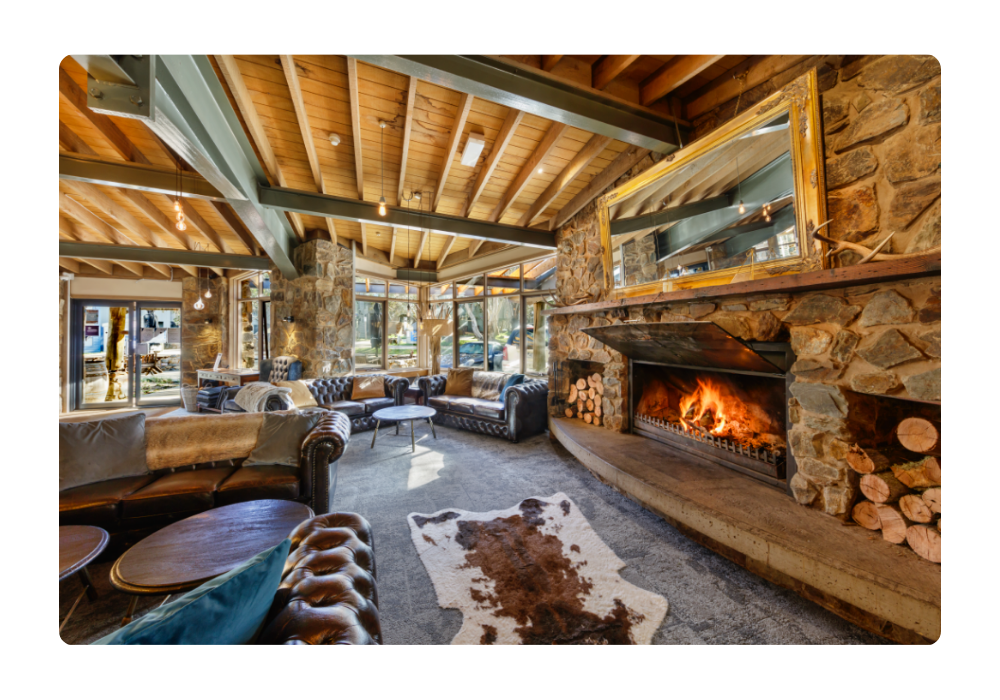 Club Wyndham Dinner Plain
Club Wyndham Dinner Plain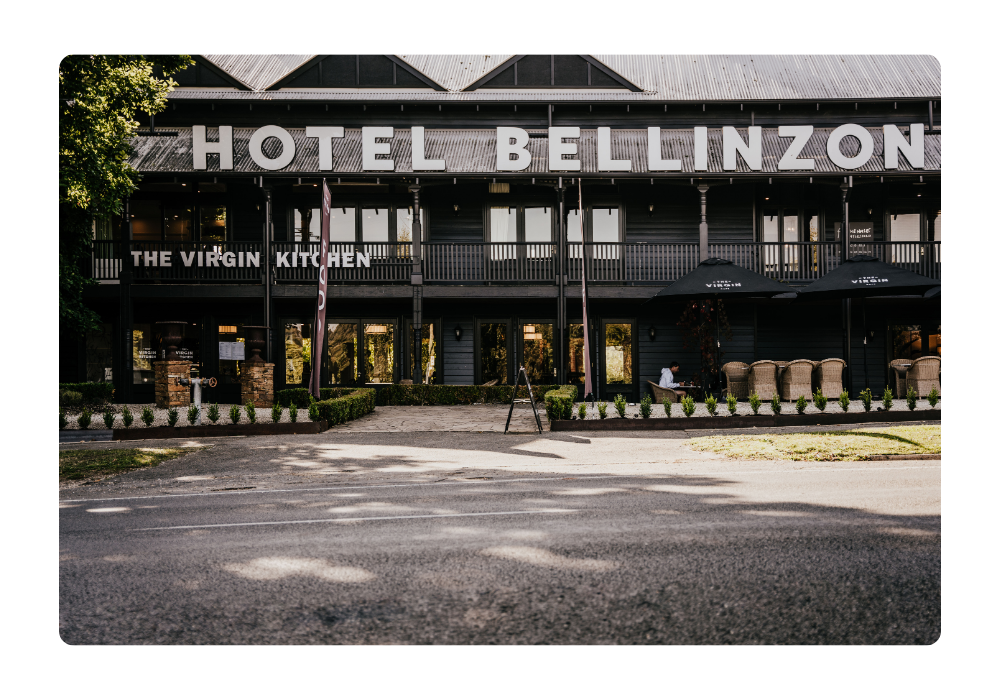 Club Wyndham Bellinzona
Club Wyndham Bellinzona